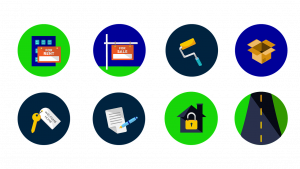When you become handicapped because of a sickness, an accident, or a serious medical condition, Social Security disability payments may help you maintain a roof over your head and food on the table. However, because of the many processes, the intricate paperwork, and the possibility of in-person hearings, applying for these benefits may be a difficult process.
Be aware that in order to be eligible for Social Security disability payments for yourself or qualified family members, you must be “insured.” This indicates “that you worked long enough, recently enough, and paid Social Security taxes on your wages,” according to the U.S. Social Security Administration.
We’ll go through each step of the procedure with you and let you know what to anticipate at each level of the Social Security disability application process. Read on to learn more about the procedure and the actions you’ll need to take if you think you could be eligible for support via the Social Security Disability Insurance (SSDI) and Supplemental Security Income (SSI) programs.
Who Are the Programs for Supplemental Security Income (SSI) and Social Security Disability Insurance (SSDI) Made For?
Planning for the future might seem meaningless when you’re dealing with a handicap or a chronic condition that keeps you from having a full-time job. Furthermore, when you are no longer able to provide a reliable source of income, it might become very hard to pay your bills and maintain your standard of living. Life may become more challenging when you don’t know when you’ll be paid, which is why the Social Security and Supplemental Security Income disability programs were created in the first place.
The expenditures associated with caring for people and children who have impairments are often prohibitive and out of reach, according to a 2020 research from the Aspen Institute titled The True Cost of Caregiving. According to the study, more than half of individuals who live in long-term poverty are handicapped adults, who make up around 12% of the country’s working-age population. Adults with disabilities are twice as likely to put off necessary medical treatment and three times more likely to struggle to pay their obligations.
The financial effects also apply to household carers, such as parents, siblings, or other family members. According to the survey, family caregivers with part-time or full-time employment are more likely to take time out of work since there isn’t always dependable or inexpensive access to professional care, which results in lost household income.
Even more challenging in managing payments and other home costs is the fact that around 28% of family caregivers look after both an adult and a youngster. The Social Security Administration states that the majority of aid for handicapped persons comes from the Social Security and Supplemental Security Income disability programs, which helps ease the burden on their carers. Both programs, while they operate in distinct ways, are run by the Social Security Administration and are only open to those who fulfill certain medical requirements.
Which Medical Conditions Qualify for Social Security Disability or SSI?
Those who need these benefits the most may find it challenging to qualify for help via the Social Security Disability Insurance (SSDI) and Supplemental Security Income (SSI) programs due to the intricacy of the application procedure and the hurdles one must clear to be accepted. This implies that people who need help the most are sometimes too exhausted to argue when their application is wrongfully refused. It becomes useful to research if your condition is often regarded as debilitating and whether you have a chance of qualifying for Social Security Disability or SSI payments before you apply.
The Social Security Administration provides a list of various ailments and problems that may affect people over the age of 18 as well as children under the age of 18 when necessary. Following the completion of the application procedure, which includes all documentation, medical examinations, and hearings, having one of these conditions often results in acceptance for SSDI/SSI benefits.
According to the Social Security Administration, the following medical problems are serious and a solid foundation for a disability claim. However, not everyone who has one of these ailments will be eligible. Be informed that the list of qualifying criteria is changed often. This implies that over time, additional requirements may be added and that some of the ones on this list may no longer be applicable.
Listing Of Impairments – Adult Listings
| Category | Type |
| Musculoskeletal | Degenerative disc disease Arthritis Carpal tunnel syndrome (CTS) Joint pain Back pain Neck pain |
| Cardiovascular | Heart failure Heart disease Heart arrhythmias |
| Congenital Disorders | Down’s Syndrome |
| Digestive System | Gastrointestinal hemorrhage Hepatic (liver) dysfunction Inflammatory bowel disease Short bowel syndrome Malnutrition |
| Endocrine Gland Disorders | Pituitary gland disorders Thyroid gland disorders Parathyroid gland disorders Adrenal gland disorders Diabetes mellitus Other pancreatic gland disorders |
| Genitourinary Disorders | Chronic glomerulonephritis Hypertensive nephropathy Diabetic nephropathy Chronic obstructive uropathy Hereditary nephropathies |
| Hematological Disorders | Hemolytic anemias Disorders of thrombosis and hemostasis Disorders of bone marrow failure |
| Immune system | Inflammatory arthritis Lupus |
| Mental Disorders | Schizophrenic, Delusional (Paranoid), Schizoaffective, and Other Psychotic Disorders Depression Post-traumatic stress disorder (PTSD) Bipolar disorder Personality disorder Anxiety disorder |
| Neurological | Seizure disorders Epilepsy Multiple sclerosis Autism spectrum disorder |
| Respiratory System | Chronic obstructive pulmonary disease (COPD) Asthma |
| Skin Disorders | Ichthyosis Bullous diseases Chronic infections of the skin or mucous membranes Dermatitis Hidradenitis suppurativa Genetic photosensitivity disorders Burns |
| Special Senses and Speech | Visual disorders Statutory blindness Hearing loss Vertigo Ménière’s disease |
Having any one of these conditions may improve your application for Social Security disability payments. However, because of the complexity of each of these diseases, it is feasible for someone to get an SSDI or SSI denial based on a single component or an insufficient study. Your ability to work and the judge or case reviewer assigned to your case will both have an impact on whether or not you are eligible for benefits.
You’ll need a thorough examination from a medical expert or current medical documents that confirm your condition in order to be eligible for Social Security disability payments or SSI. Additionally, you must have held a position or occupation that qualifies you for Social Security disability payments. The majority of the time, Social Security disability payments will last until you can resume normal employment. Additionally, some programs include transitional programs that prolong benefits while you gradually return to the workforce.
Another list of ailments and disorders used to establish disability payments is provided by the Social Security Administration for children under the age of 18. Similar to adults, eligibility for SSDI/SSI payments is often determined by the presence of one of these illnesses.
According to the SSA website, a physical or mental impairment, or combination of impairments, that “causes marked and severe functional limitations, that can be expected to cause death, that has lasted or can be expected to last for a continuous period of not less than 12 months” will typically qualify a child under the age of 18 as disabled. The severity of the following medical issues may be considered for determining SSDI/SSI compensation.
Listing Of Impairments – Children Listings
| Category | Type |
| Growth Impairment | Low Birth Weight Failure to Thrive |
| Musculoskeletal | Major dysfunction of a joint(s) (due to any cause) Reconstructive surgery or surgical arthrodesis of a major weight-bearing joint Disorders of the spine Amputation (due to any cause) Fracture of the femur, tibia, pelvis, or one or more of the tarsal bones Fracture of an upper extremity Soft tissue injury (e.g., burns) |
| Special Sense and Speech | Loss of Visual Acuity Contraction of the visual field in the better eye Loss of visual efficiency Hearing loss not treated with cochlear implantation Hearing loss treated with cochlear implantation |
| Respiratory System | Chronic pulmonary insufficiency Asthma Cystic Fibrosis Lung Transplant Growth failure due to any respiratory disorder |
| Cardiovascular System | Chronic heart failure Recurrent arrhythmias Congenital heart disease Heart transplant Rheumatic heart disease |
| Digestive System | Gastrointestinal hemorrhaging Chronic liver disease Inflammatory bowel disease (IBD) Short bowel syndrome (SBS) Growth Failure Liver transplantation Need for supplemental daily enteral feeding |
| Genitourinary Disorders | Chronic kidney disease, with chronic hemodialysis or peritoneal dialysis Chronic kidney disease, with kidney transplant Chronic kidney disease, with impairment of kidney function Nephrotic Syndrome Congenital Genitourinary Disorder Growth failure due to any chronic renal disease Congenital Complications of chronic kidney disease |
| Hematological Disorders | Hemolytic anemias Disorders of thrombosis and hemostasis Disorders of bone marrow failure Hematological disorders |
| Skin Disorders | Ichthyosis Bullous disease Chronic infections of the skin or mucous membranes Dermatitis Hidradenitis suppurativa Genetic photosensitivity disorders Burns |
| Endocrine Disorders | Any type of diabetes mellitus in a child who requires daily insulin |
| Congenital Disorders | Non-mosaic Down syndrome A catastrophic congenital disorder |
| Neurological | Major motor seizure disorder Nonconvulsive Epilepsy Brain tumors Motor dysfunction Cerebral Palsy Meningomyelocele Autism Spectrum Disorder and Other Pervasive Developmental Disorders Communication impairment |
| Mental Disorders | Schizophrenic, Delusional (Paranoid), Schizoaffective, and Other Psychotic Disorders Mood Disorders Intellectual disability Anxiety Disorders Somatoform, Eating, and Tic Disorders Personality Disorders Psychoactive Substance Dependence Disorders Attention Deficit Hyperactivity Disorder Developmental and Emotional Disorders |
| Cancer (malignant neoplastic diseases) | Malignant solid tumors LymphomaLeukemia Thyroid gland Retinoblastoma Nervous system Neuroblastoma Malignant melanoma |
| Immune System Disorders | Systemic lupus erythematosus Systemic vasculitis Systemic sclerosis (scleroderma) Polymyositis or dermatomyositis Undifferentiated and mixed connective tissue disease Immune deficiency disorders Human immunodeficiency virus (HIV) infection Inflammatory arthritis Sjögren’s syndrome |
The Application Process for Social Security Disability Benefits
The time it takes to submit an application for Social Security disability payments might range from a few months to many years. This is due in part to the lengthy process and the many layers of government red tape that go into making a final decision. You may not need to complete all of the stages in order to be eligible for Social Security disability benefits, but there are a number of them. Each phase of the procedure is described here, along with what to anticipate at each stage.
- First Application: This stage entails completing the initial paperwork for your Social Security disability claim and delivering any necessary supporting evidence, such as X-rays, letters of reference, or medical records. The DDS will often ask for this documentation straight from your medical practitioner.
- Reconsideration: If your original application for SSI is rejected, the reconsideration procedure will start. Your case will now be examined for analysis by a separate SSI reviewer.
- Administrative Hearing: You may request an administrative hearing if your request for reconsideration is refused. Your case will now be examined by a judge, who will make a final judgment.
- Appeals Council: You have 60 days to appeal to an appeals council if your case is turned down in an administrative hearing. Your case will either be continued by the appeals council or rejected outright.
Each of these processes might feel intimidating if you’re filing for Social Security benefits on your own. If you can break down each stage and think about its ramifications separately, the process becomes simpler to comprehend.
Step 1: Initial Application
Any of these advantages’ first applications might seem like a full-time job. In order for the Social Security Administration to determine if you are eligible for benefits, you will need to provide correct information about your health on thorough government forms, provide medical documents, and complete a number of questionnaires.
Fortunately, the American Social Security Administration has an Adult Disability Checklist that will assist you in compiling the facts needed to submit an application. You could really be better off hiring an SSDI/SSI lawyer or attorney as soon as you file your first application, even though many lawyers who handle SSDI/SSI cases offer to assist after you’ve been refused. At the absolute least, they may assist you in completing forms, gathering documentation, and submitting your first round of paperwork. An honest attorney’s counsel may be useful as you negotiate the intricate world of regulations.
If you submit the first SSDI/SSI application on your own, you must make sure you do it quickly and efficiently, and that you supply all the information and forms they need. Your application may be delayed or denied if you don’t provide all the necessary paperwork.
Also Read: How Can Outdoor Space Increase the Value of Your Home?
Step 2: Reconsideration
If your original claim for SSI benefits is turned down, reconsideration will only be taken into account. You have 60 days after receiving a refusal to file an appeal by asking for your case to be reconsidered. Your claim is been sent to a separate reviewer to examine once again. The Social Security Administration reports that, as of the most recent count, just 22% of applicants had their first applications for Social Security payments approved. The remaining 78 percent may either accept their rejection or submit a request for reconsideration. From 2008 to 2017, the proportion of applicants who received approval following review ranged from 2% to 9%.
At this point in their claim, many of individuals employ an attorney or lawyer to help them. It’s important to keep in mind, though, that some states permit you to skip the reconsideration phase and go straight to the administrative hearing stage. Alaska, Alabama, Colorado, Louisiana, Michigan, Missouri, New Hampshire, New York, Pennsylvania, and certain parts of California are among the states without a reconsideration phase.
Step 3: Administrative Hearing
You must proceed to the administrative hearing if your request for reconsideration is denied or if you reside in a state where such a request is not permitted. You have 60 days to appeal the most recent determination issued about your SSI application at this phase.
At this point, an administrative law judge is appointed to review your claim and make a determination on your eligibility. These cases are often heard within 75 miles of your residence, allowing you to attend in person. Even while many SSI applicants choose to represent themselves, having an SSI lawyer on your side might be beneficial at this point in the procedure.
You should collect any new evidence for your case that has emerged after you first applied for Social Security disability payments in order to be ready. Included in this information should be any recent doctor visits, hospital visits, medical procedures, or tests that you have undergone. Along with any changes to your medical history, you should also keep track of the drugs you are now taking. Before your administrative hearing date, you should compile additional supporting materials such as forms, medical records, and written declarations.
You will have the chance to present your case to the judge who will ultimately decide at your administrative hearing. The administrative hearing is regarded as a vital part of your application for Social Security disability payments since far more cases are successful and approved at this stage compared to reconsideration.
You must be fully aware of your illness or impairment at this time and be able to explain how it keeps you from working and providing for yourself. Nevertheless, according to the Social Security Administration, over 64% of disability applications are eventually rejected.
Step: Appeals Council
You have another 60 days to submit an appeal with the Appeals Council if, like the majority of applicants, you are eventually refused Social Security disability payments. At this point, an appeals council will examine your administrative hearing to evaluate whether the judge assigned to your case adhered to the norms and regulations of the Social Security Administration in reaching his or her decision.
Once your case is in the hands of an appeals council, one of three possible results might be anticipated. Initially, the judgment may be overturned, awarding you the Social Security disability payments you requested. Second, the judge who reviewed your case at your administrative hearing can be asked to review it again. Or, third, your case’s rejection will remain.
You have the option to take your case all the way to Federal Court on appeal.
The Social Security Benefits Verdict
If you are inexperienced with the procedure, applying for Social Security benefits may seem overwhelming. Living with a handicap or chronic disease may be very difficult at a time when you’re least able to cope because of the complicated web of paperwork, necessary medical appointments, and the appeals process.
Maintaining the highest level of organization is the greatest thing you can do to make sure your case runs well. To ensure that the Social Security Administration has a continuous record of your requests for treatment, keep meticulous records of your medical condition and keep visiting a doctor often.
Once you start the process of applying for Social Security disability payments, be sure to complete all forms and steps fully and precisely. If necessary, you may also enlist the help of a lawyer who focuses on SSDI/SSI claims to help you with your case.
Do you have any information or event for PJTV NEWS to publish or cover? Kindly Call us on +2348063615010 or send us message on Whatsapp number +2348063615010 or send us an email pjtvnews@gmail.com
















